Competitive Analysis For Fashion Businesses
Understanding your competitors and the market landscape is key to thriving in the fashion industry. This guide takes you through the intricacies of competitive analysis for fashion brands, providing valuable insights to propel your brand to the top.
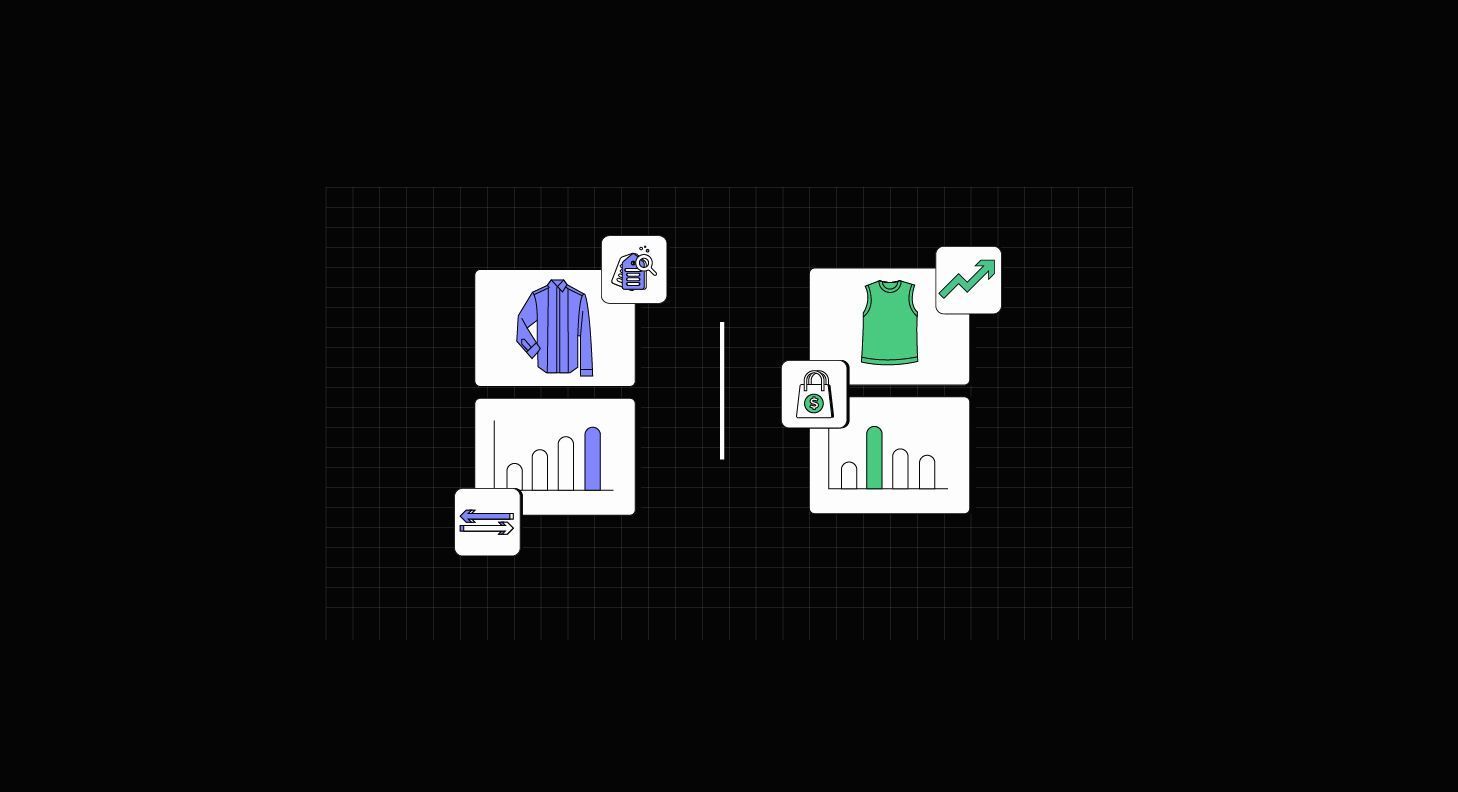
In the fashion industry consumer preferences evolve daily, and new players enter the scene regularly.
Competitive analysis is not just about researching who is on top. It's about getting the right information to make profitable decisions, fine-tune retail strategies, and secure your position in a fiercely competitive market.
Whether you're a seasoned fashion brand or a budding startup, understanding your competitors and the market landscape is key to thriving in this industry. In this comprehensive guide, we'll take you through the intricacies of competitive analysis for fashion businesses, providing valuable insights and strategies to propel your brand to the top.
Understanding the Competitive Landscape
Before diving into the depths of competitive analysis, it's crucial to define what the competitive landscape means for your brand. It encompasses all the entities—direct and indirect competitors—that influence your market standing.
Why It Matters: Understanding your competitive landscape allows you to gauge the scope of your market, anticipate challenges, and identify opportunities for growth.
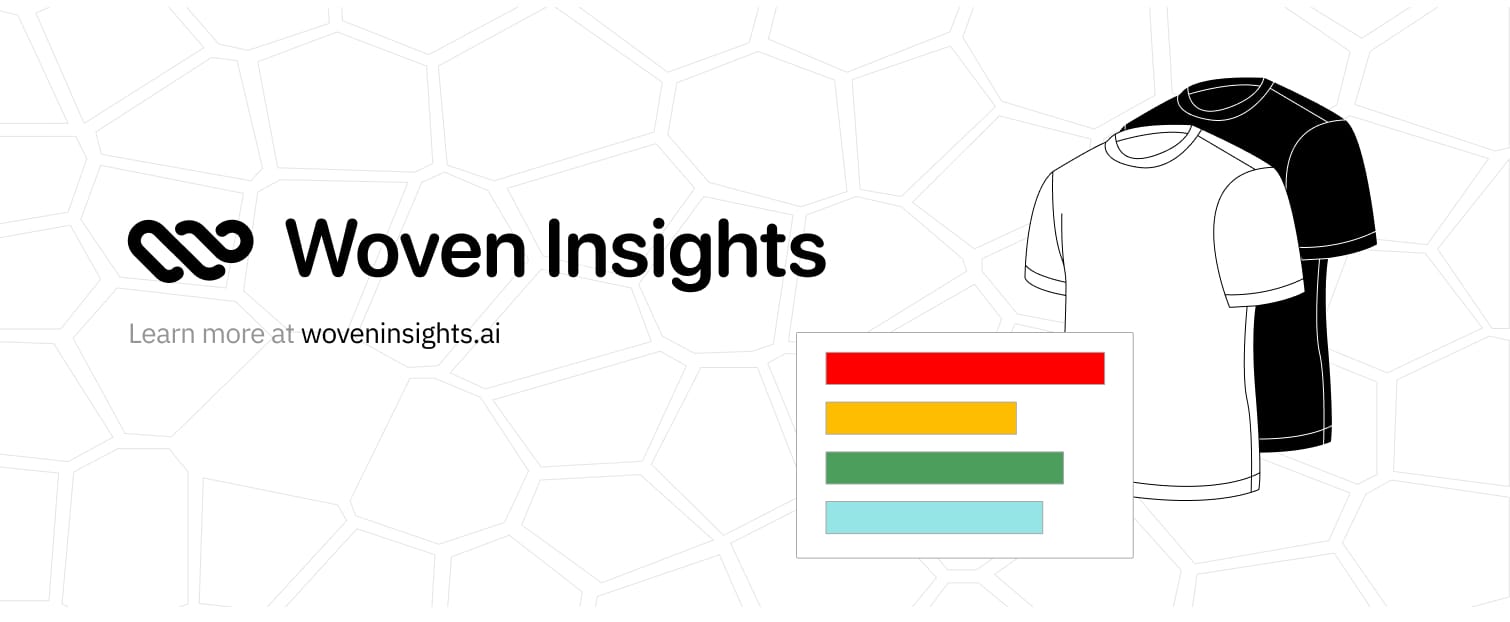
Abundant Dataset and AI Models Can Help you Understand Competition better
Woven Insights leverages several high quality datasets and AI models that understand fashion to extract the most valuable Competitive insights for your business.
Identifying Your Competitors
In the world of fashion, competition is not limited to brands that produce nearly identical products. It's a diverse landscape where brands may compete directly, indirectly, or across various segments. Identifying your competitors accurately is the foundation of effective competitive analysis. Here's a closer look:
- Direct Competitors: These are brands that offer products similar to yours, often targeting the same customer base with comparable styles, price points, and product categories. For example, if you're a sportswear brand, other sportswear labels that appeal to the same audience are your direct competitors.
- Indirect Competitors: Indirect competitors may offer different product categories but still target the same customer segment. For instance, if you're a high-end luxury fashion brand, a fast-fashion retailer with a similar customer demographic could be considered an indirect competitor.
To conduct a comprehensive competitive analysis, it's essential to also assess both online and offline competition. Here's how:
- Traditional Competitors: These are brick-and-mortar fashion brands that operate physical stores. They may have a long-standing presence and customer base. When identifying traditional competitors, consider factors like geographic proximity and the markets they serve.
- Online Competitors: In the digital era, online fashion retailers have gained prominence. These can include e-commerce giants, niche online stores, and direct-to-consumer (DTC) brands. To identify online competitors, explore e-commerce platforms, social media, and fashion marketplaces.
- Cross-Channel Competitors: Some brands straddle both traditional and online channels. They maintain physical stores while also having a strong online presence. Cross-channel competitors often require a more nuanced analysis that considers their strategies in both realms.
- Global vs. Local Competitors: Depending on your market reach, you may compete with global fashion giants or local boutique brands. Recognize that competition can vary significantly based on geographic factors.
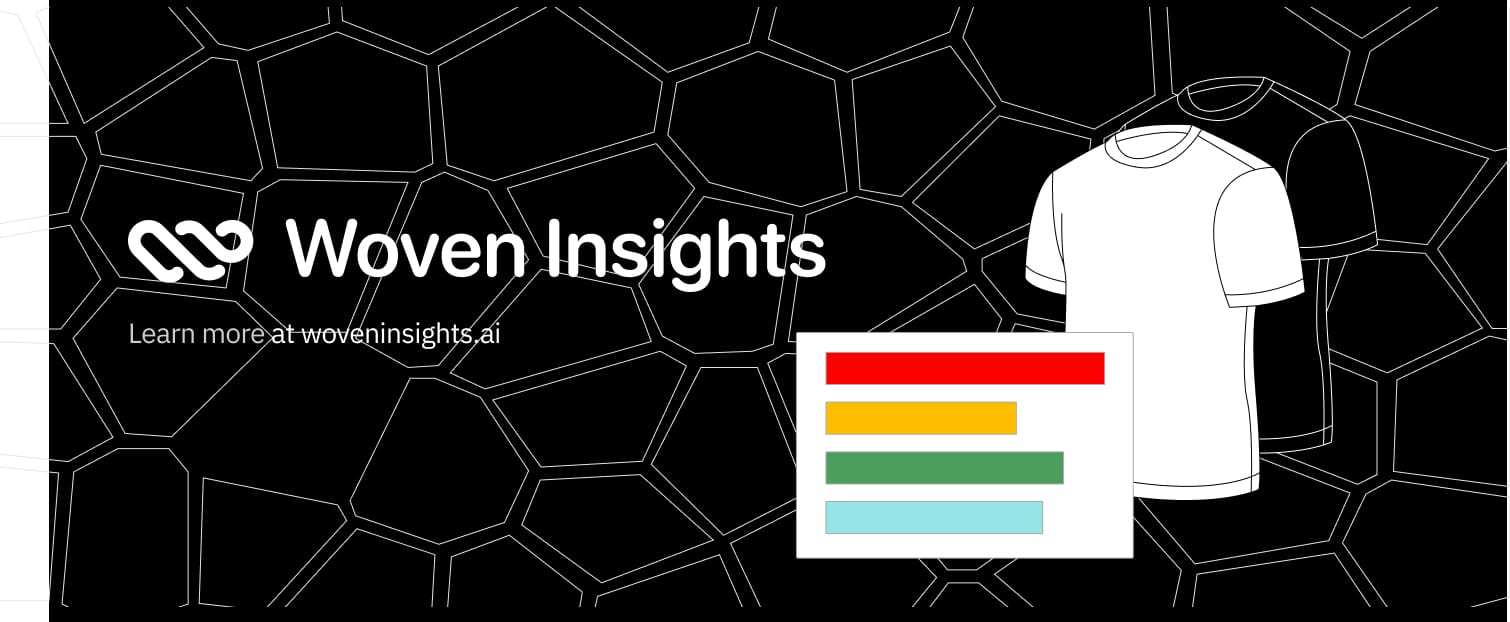
Discover competitors with Woveninisghts
Woveninsights can help you discover and identify various types of competitors while offering actionable insights for business success.
Data Collection and Analysis
Competitive analysis is only as good as the data it relies on. In the fashion industry, where consumer preferences and market trends can change rapidly, collecting and analyzing the right data is paramount.
Data Collection
There’s a wide range of places you can get the needed data to carry out a proper competitive analysis
- Online Platforms: The internet is a treasure trove of information for competitive analysis. Explore various online platforms, including:
- E-commerce Websites: Study your competitors' online stores to gather data on product listings, pricing, and customer reviews.
- Social Media: Monitor competitors' social media profiles to gauge their engagement, follower growth, and content strategies.
- Fashion Marketplaces: Platforms like Amazon or Etsy may host your products or those of your competitors, providing valuable insights.
- Customer Reviews: Customer feedback is a gold mine of information. Analyze reviews and ratings on e-commerce websites and social media to understand customer sentiment, product performance, and areas for improvement.
- Market Reports: Market research reports provide industry-wide data on market trends, consumer behavior, and competitor analysis. Consider subscribing to industry-specific reports or accessing free reports from trusted sources.
- Social Listening Tools: Invest in social listening tools to track mentions of your brand, products, and competitors across social media platforms, forums, and blogs. These tools can provide sentiment analysis and consumer opinions.
- Web Scraping Tools: Web scraping tools can automate the collection of data from websites. This can include scraping competitor product information, pricing, and customer reviews. Ensure compliance with website terms of service and legal considerations when using web scraping.
Best Practices For Data Collection
- Set Clear Objectives: Define what specific data you're looking for and the objectives of your analysis. This will guide your data collection efforts.
- Create Data Collection Protocols: Establish standardized protocols for collecting data to ensure consistency and reliability. This is crucial, especially if multiple team members are involved.
- Regular Data Updates: The fashion industry is dynamic. Regularly update your data to capture changes in competitor strategies, market trends, and consumer sentiment.
- Automation: Leverage automation tools and scripts where possible to streamline data collection processes. This reduces manual effort and enhances efficiency.
- Data Validation: Validate collected data to ensure accuracy. Inaccurate data can lead to flawed analysis and decision-making.
- Data Storage and Management: Implement a robust data storage and management system to organize and secure collected data. Consider data security and privacy compliance.
Data Analysis Process
- Data Cleansing: Before analysis, clean and preprocess collected data to remove noise, outliers, and irrelevant information.
- Descriptive Analysis: Start with descriptive analysis to understand basic statistics, such as average prices, review ratings, and market share.
- Advanced Analytics: Apply advanced analytics techniques, such as regression analysis, clustering, and sentiment analysis, to gain deeper insights from the data.
- Competitor Benchmarking: Benchmark your brand against competitors on key metrics and KPIs. Identify areas where you excel and where you lag behind.
- Trend Identification: Look for emerging market trends, consumer preferences, and shifts in competitor strategies through data analysis.
- Visualization: Create data visualizations, such as charts and graphs, to present insights in a clear and understandable format for stakeholders.

Use Woveninsights to gain a competitive edge
If you would like to learn more about how we can help you get ahead of competition using a Data driven approach, click the button below to Book a demo.
Key Metrics and KPIs
To gain meaningful insights from competitive analysis in the fashion industry, it's essential to focus on the right metrics and KPIs. These performance indicators help you evaluate your brand's position relative to competitors and track your progress. Here's an in-depth look at key metrics and KPIs:
- Market Share: Market share represents the portion of the total market sales that your brand captures, usually expressed as a percentage. It is important, as it indicates your brand's relative size and competitiveness in the market. It helps you understand how well you're performing compared to competitors.
For example, here’s how Woveninsights breaks down market share across dominant color categories. It’s a useful way to spot which brands are leading specific trends and where you might be able to challenge them.

- Customer Sentiment and Satisfaction: This is an arbitrary measure of product or business performance, from the point-of-view of customers. It is important because the most successful businesses are those who serve the customers best. Customer Sentiment & Satisfaction is best determined through:
- Customer Reviews: Analyzing customer reviews and ratings to gauge overall sentiment towards your brand and competitors.
- Net Promoter Score (NPS): Measuring how likely customers are to recommend your brand or a competitor's brand.
Take this example from Woveninsights, which tracks real-time sentiment for a specific product. It helps pinpoint exactly what customers are loving and what might need a second look.

- Pricing Strategies and Competitiveness: There is also a need for you to compare your product prices with competitors' prices for similar items, and understand how changes in prices affect demand and sales. Pricing impacts sales and profitability. Analyzing pricing strategies helps you set competitive and profitable price points.
- Inventory Turnover Rate: This is a measure of how quickly your inventory is sold and replaced. Efficient inventory turnover minimizes holding costs and ensures you have the right products in stock to meet demand. This is important in competitive analysis, as it helps you identify areas for improvement when it comes to inventory management.
Here's how that looks in practice: this Woveninsights view shows replenishment patterns across key brands. It gives you a clearer sense of how fast different products are restocked and where your inventory strategy could be fine-tuned.

By tracking and analyzing these metrics and KPIs, fashion brands can gain a comprehensive understanding of their competitive landscape, identify areas for improvement, and make data-driven decisions to stay ahead in the dynamic fashion industry.
Conclusion
In a fashion world that never stands still, competitive analysis is your compass, guiding you through the twists and turns of the market. It is one of many sure paths to informed decisions, strategic adaptations, and sustainable success.
Embracing competitive analysis is an ongoing practice, not a one-time task. Start or enhance your competitive analysis efforts today to secure your brand's position, adapt to change, and lead the way in the world of fashion.
We wrote another article providing a detailed guide to carrying out competitive analysis for your fashion business. We hope you find it helpful.
About Woven Insights
Woven Insights is an AI-powered fashion analytics software, empowering fashion retailers, merchandisers, research teams, and manufacturers with accessible actionable insights, by leveraging Artificial Intelligence.
Gone are the days when actionable fashion analytics was accessible only to larger, more financially robust fashion businesses. We are democratizing fashion intelligence with the most affordable pricing in the industry
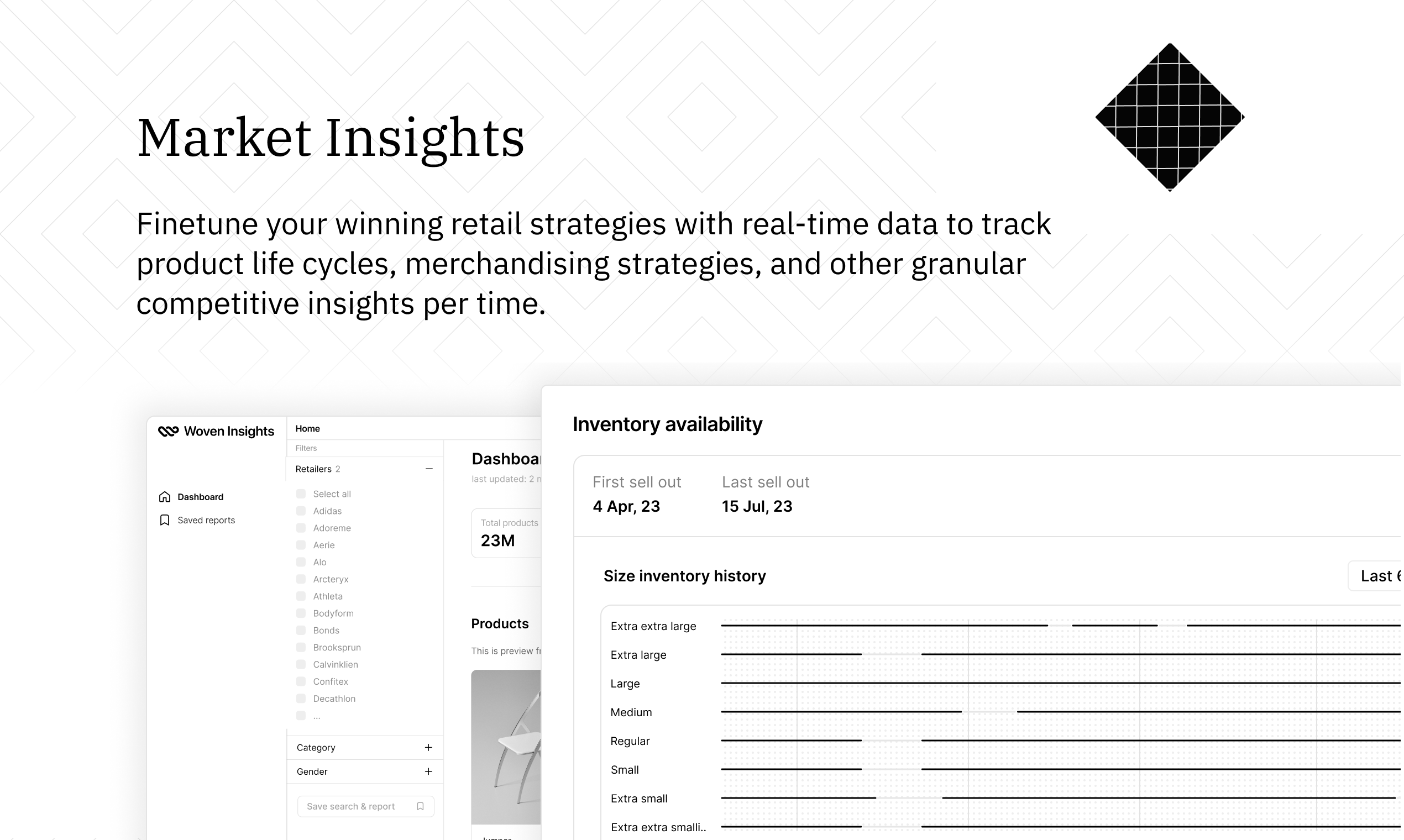
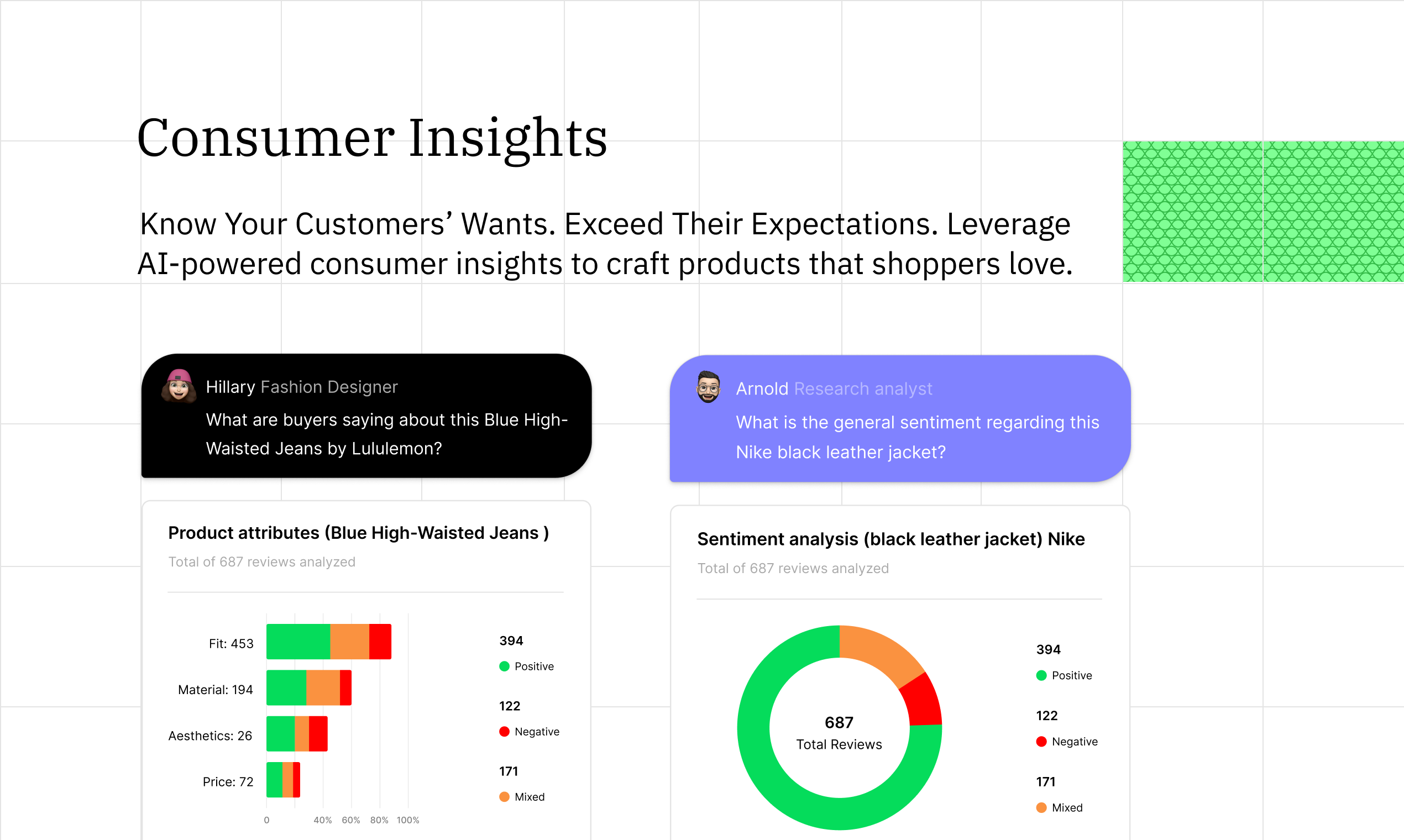
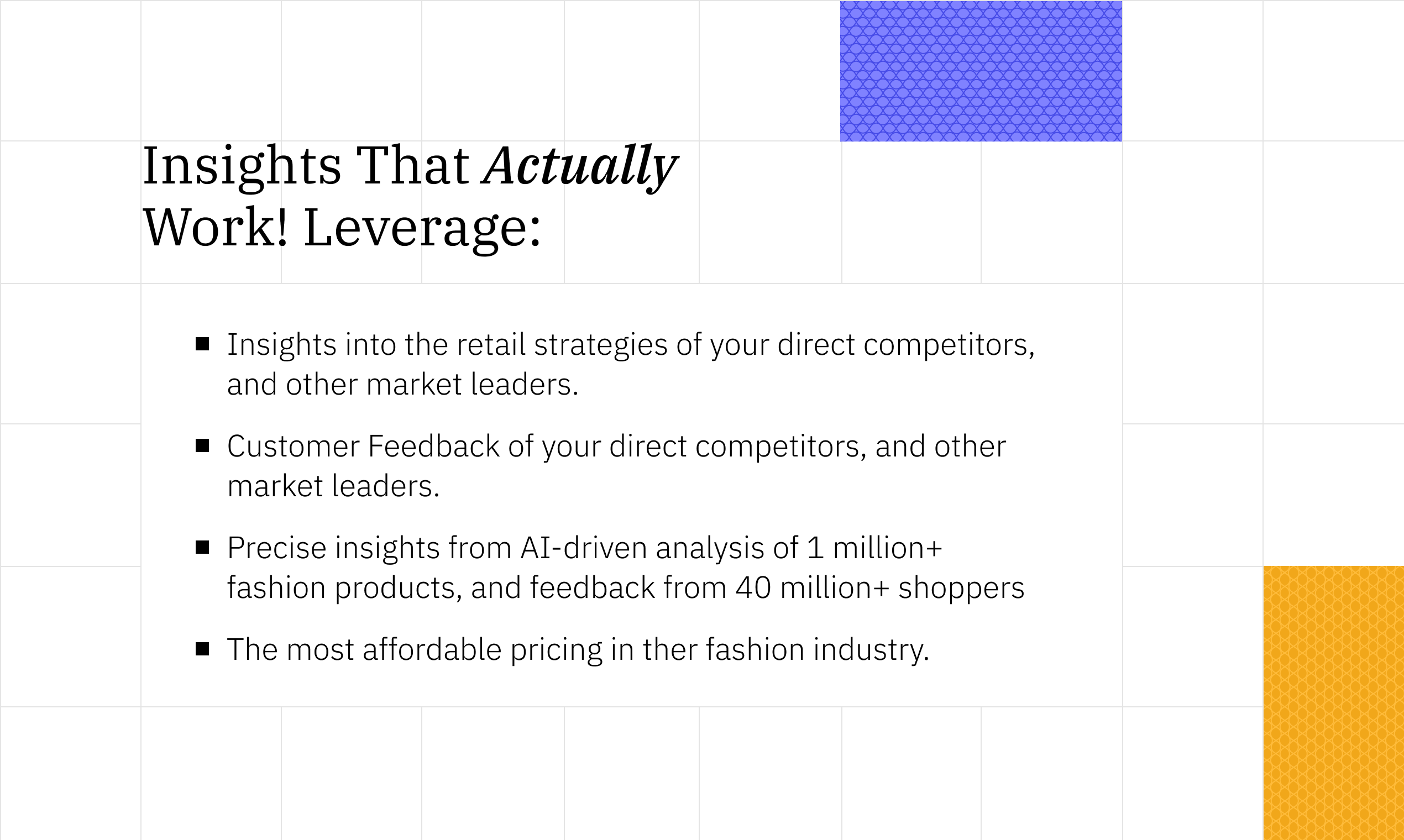
Join the market leaders, and gain a high-level understanding of the fashion market, by leveraging insights from more than 60 million online shoppers and 6 million+ products from more than 120 of the top global fashion brands.


